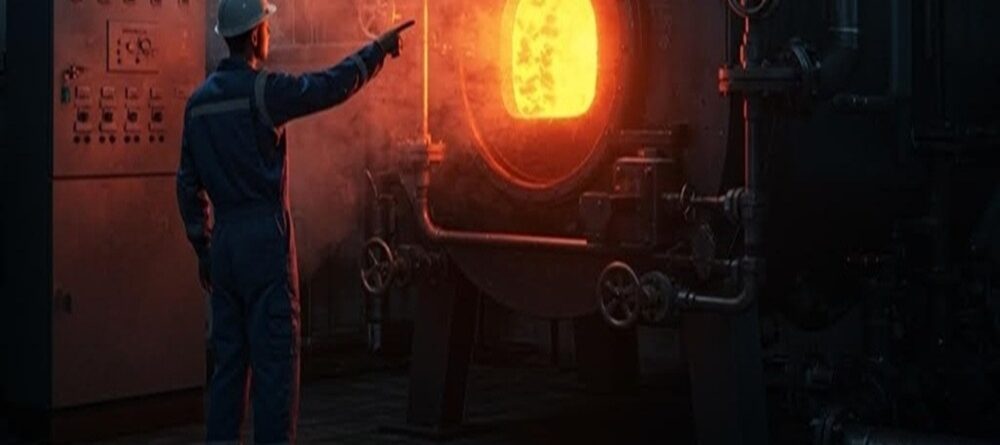Understanding the Real Risk: Steam Boiler Explosions
Understanding the Real Risk: Steam Boiler Explosions Are Not Fate, But Failure of Prevention
Steam boilers are critical components in industrial operations, but they also carry serious risks when not properly managed. One of the most dangerous among these is the risk of steam-water explosions, which can result in catastrophic damage, injury, or even loss of life. What makes this particularly concerning is that such accidents are almost always preventable. They often stem from inadequate maintenance, untrained personnel, and a lack of investment in safety systems. At Bimaks, we believe that industrial safety is not just a responsibility but a necessity. In the article below, you will find a technical overview of why boiler explosions happen and how they can be avoided with the right measures.
An article examining the risk of explosions in steam boilers
Preventing accidents in boiler and steam systems is possible through simple protective measures and proper operational procedures. However, the employment of unqualified personnel and the tendency of workplace owners to invest in raw materials or business development rather than protective maintenance and workplace safety often lead to such disasters. Below, you can find our informative article on the causes and prevention of potential water-steam-related explosions in a boiler room.
A steam boiler typically explodes for the following reasons:
Excessive pressure: If the safety valve is faulty or improperly adjusted, steam cannot be released, leading to excessive pressure inside the boiler. This situation can cause the boiler body to exceed its limits and explode. The inability to release steam is not a common occurrence. However, there is another phenomenon that causes this type of explosion: Thermal Stress. This occurs when the level sensors mistakenly believe that there is water in the boiler and do not add water to the system. Over time, all the water leaves the boiler as steam, and the water inside runs out. The burner system continues to provide heat as if there was water in the boiler. During this process, the boiler reaches temperatures of thousands of degrees. Suddenly, the sensor or level device starts working properly and opens the valves to supply fresh water to the boiler. At this point, incredible thermal stress occurs. The explosion occurs when cold make-up water hits the hot metal body.
Remember the moment when you forgot a teapot on the stove to make tea, and the water ran out, leaving the teapot almost bright red. If you try to pour tap water into this teapot (which you shouldn’t do), you will witness the release of serious energy. Now imagine this happening in a boiler that holds dozens of tons of water. You wouldn’t believe the power of the explosion. There are steam boilers that explode in this way and fly hundreds of meters away from the boiler room.
Why do level devices or sensors malfunction in this situation? Blockages occur due to inert substances in the water, suspended solids, sludge, and even partial calcification (commonly known as scaling). These blockages deceive the system. Then, when the cause of the blockage suddenly disappears, a problem occurs. We recommend that boiler operators open and close the blow-off valves located at the bottom of these level detection devices at regular intervals. The main reason is to keep that area clean at all times.
While on the subject, we would also like to draw attention to the “permanent blowdown” process in boiler water level control. A permanent blowdown valve is located at the same point as the level detection devices mentioned above. The purpose is that, since evaporation occurs at the water surface, the conductivity control in the boiler can be most effectively achieved by blowdowns performed at this point. For this reason, we recommend that the blowdown valves of level detection devices be operated frequently, and that the continuous blowdown valve, or surface blowdown valve, be kept slightly open at all times. With just these two actions, you can minimize the risk of steam boiler accidents by more than half.
Other Common Causes of Boiler Explosions
- Scaling and Fouling: Minerals in the water (especially calcium and magnesium) accumulate inside the boiler. This impedes heat transfer, increases metal temperature, and weakens the metal structure—greatly increasing the risk of cracking and explosion.
- Material Fatigue or Corrosion: The metals in the boiler structure fatigue, rust, or crack over time. Every piece of equipment has a useful life. Especially in high-pressure systems, this can lead to sudden structural rupture.
- Operator Errors: Although not very common, explosions can result from errors by untrained personnel. Incorrect operating procedures (e.g., rapidly introducing cold water into a hot boiler) can create dangerous situations due to lack of training or carelessness.
- Lack of Maintenance: If periodic maintenance is not performed, the safety valve, pressure gauge, and water level control system may malfunction. This prevents early warning systems from working properly.
In summary, over 90% of steam boiler explosions are caused by human error, negligence, or lack of maintenance. Technical malfunctions can often be detected early—but they become hazards due to neglect.
Our hope is that such disasters can be prevented through proactive technical measures, and that personnel working in boiler rooms participate in technical and occupational safety training to understand the severity of the risks. Unfortunately, waiting for them to gain experience may be too late.
We wanted to write this article from a technical perspective on boiler explosions, which are sadly too common in industry. Boiler explosions, falls from heights, and gas poisoning in enclosed spaces are accidents that we no longer want to hear about—and which can be easily prevented through proper education.
Let’s put aside the “it won’t happen to me” mindset, and instead prioritize safety, diligence, and preventative care.

![20230611010336_[fpdl.in]_drop-creating-ripple-effect-water_23-2148795902_medium](https://www.bimakskimya.com.tr/wp-content/uploads/2023/06/20230611010336_fpdl.in_drop-creating-ripple-effect-water_23-2148795902_medium.jpg)

